Pumpkins are a very popular fruit in the U.S., especially during the Autumn and Winter, and more than 1.5 billion pounds of them are transported around the country every year. But how are pumpkins transported, and how do you ensure that they are fresh and ready to eat when they arrive in stores? Pumpkins are grown in the warm season and by the time October rolls around, every store will be filled with pumpkins ready to be made into Jack o’ Lanterns or delicious pies. But before the consumer can buy them, you need to get them to the store safely. If you cannot ensure that your pumpkins are undamaged and fresh when they arrive in stores, that damages your brand and causes a dip in sales.
So, how are pumpkins transported? Shipping pumpkins can be a difficult process because there are a lot of factors to consider. They need to be properly processed after harvesting to ensure that they do not rot while they are in storage. They then need to be stored and shipped in temperature and humidity controlled vehicles so they are still safe for human consumption when they arrive. The Food Safety Modernization Act has a clear set of guidelines pertaining to the storage and shipping of food and it is important that you are compliant with these guidelines when transporting pumpkins.
Before we dive into the details about how are pumpkins transported, let’s look ahead to the 2021 pumpkin season.
Pumpkin season begins in September and runs through November. That makes these splendid squashes an essential part of autumn. From pumpkin spice lattes to craving Jack o’ lanterns for Halloween to delightful pumpkin pie on the Thanksgiving table, pumpkins are a quintessential fall staple.
Farmers plant more and more pumpkins each year. In fact, USDA statistics indicate that farmers in Illinois (the top pumpkin growing state in the U.S.), planted more than 10,900 acres of pumpkins in 2019. More than 50,000 acres of pumpkins were planted across all states in the U.S. that year.
How does the 2021 pumpkin season look? Well, pumpkins might be in short supply this year. According to information reported by NPR, pumpkin blight hit the midwest (a key pumpkin growing region) in late summer.
What is pumpkin blight? It’s a fungal infection that can wipe out pumpkin crops. It is caused by too much moisture. Heavy rains in the midwest in June and July 2021 likely caused the blight to hit early.
Because of the 2021 blight, there might be fewer perfect pumpkins for consumers to enjoy this fall. As of August 11, 2021, Libby’s (the largest producer of canned pumpkin), still says the season’s harvest is unpredictable.
However, Libby’s has also indicated that they don’t expect the price of pumpkin to rise, even with a potential shortage. This is good news for those who appreciate pumpkins.
Let’s peruse some additional details growers need to know about pumpkin season. We’ll cover how are pumpkins transported, how to store pumpkins, and other need-to-know tidbits that will get this favorite fruit from the field and to consumers.
Want to look even further into the crystal ball for autumn 2021? Let's take a peek at the Fall 2021 freight outlook and figure out how you can deal with tight capacity during peak season.

Pumpkins are grown across the United States and you will find them in almost every state. The crop conditions vary a lot depending on the local climate and soil condition, so you get a very different pumpkin depending on the source. However, the majority of the pumpkins in the country are produced in a handful of states.
In 2018, the top 5 pumpkin-producing states harvested over 1 billion pounds of pumpkins between them. While Illinois produces the most pumpkins of any state in the country, Michigan isn’t too far behind and ranks No. 4 in the national production of pumpkins. According to numbers from the Michigan Ag Council, the Great Lake State produces 146 million pounds of squash and pumpkins. This adds up to a nearly $24 million injection into the state’s economy.
Pumpkins from Michigan are healthy. They contain antioxidants like beta-carotene, vitamins E and B6 and minerals like thiamin, niacin, calcium, folate and magnesium. Additionally, pumpkins and squash are low in sodium, cholesterol and saturated fat.
Ready to learn more about how are pumpkins transported? Let's pick of the pumpkin pieces and learn more!
Pumpkins aren't the only crops coming from Michigan. Learn about shipping during Michigan's tart cherry season.
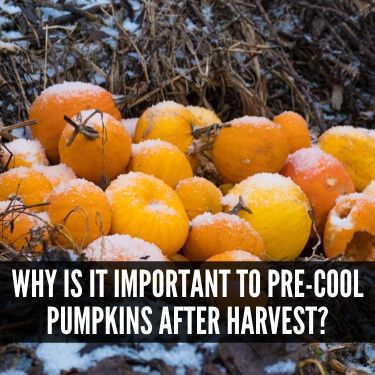
Whenever you are shipping pumpkins, it is vital that you keep them fresh, so they need to be pre cooled immediately after harvest. Pumpkins are a relatively hardy crop and the fruit surface protects them from a lot of damage. When they are harvested, the skin should be hardened and unable to be pierced with a thumbnail. However, they do need to be stored correctly to stop them from going bad. Failing to store them correctly will lead to premature decay, damage, and loss of value.
You have a short window of opportunity after pumpkins are harvested because, once the decay process begins, it cannot be reversed. Even if they are stored correctly during transportation, the quality of the pumpkin will still decline if they are not pre-cooled immediately after they are harvested.
As soon as pumpkins are harvested, they should be moved out of direct sunlight immediately so you can maintain the right storage temperature. Once they are stored in a shaded area, there are a number of different ways to pre cool pumpkins.
Room cooling is one of the most common methods for pre cooling because it is cost effective and easy to manage. This involves storing the pumpkins in a room with cold air passing through a fan, so the room acts as a refrigeration unit. It is a very cheap and simple way to maintain the right storage temperature and slow down fruit decay.
Forced air cooling is similar to room cooling but it is more direct. Cold air will be passed through fans but it is directly applied to the fruit at high velocity for faster cooling. This method can cause some damage to the fruit and vegetables, but it is effective for pumpkins because they are very sturdy.
Hydrocooling is a pre cooling method that involves using cold water to rapidly cool fruits and vegetables. In a lot of cases, the produce is directly submerged in cold water. However, when pre cooling pumpkins, you can apply a cold water drip to the produce for around 4 to 6 hours.
It is important that these pre cooling methods are applied immediately after harvest so the residual field heat can be removed and the pumpkins can be stored at the right temperature and protected from decay before they can be cured and transported.
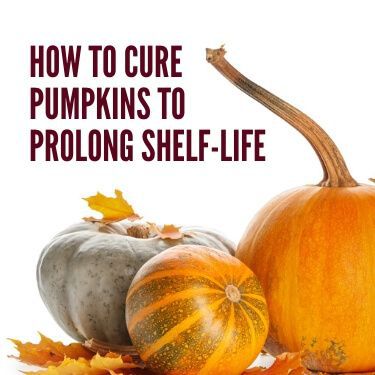
Curing pumpkins is vital because it helps to ripen the fruit, repair any superficial damage to the fruit surface, and harden the rind so the pumpkins are better protected during transit. When curing pumpkins it is important that they are stored at a very precise temperature for a specific period. As long as the pumpkins are cured correctly, they will stay fresh for around 3 months, which is ample time for them to be transported to stores and sold.
Before pumpkins are harvested and cured, it is important to check that they are ready. The stem is the biggest giveaway because it will die off and turn hard when the pumpkin is ready to be cured. Hard skin that cannot be punctured and a hollow sound when the pumpkin is slapped are also indications that the fruit is ready to be cured.
Before curing, the pumpkins need to be cleaned to remove any and soil and kill any pathogens on the surface of the fruit. This is an important step because those pathogens will cause the fruit to decay if they are not cleaned off properly. Once clean, the pumpkins need to be stored at a temperature of 80-85 degrees for at least 10 days to 2 weeks. If frost or cold nights are likely, it is important that the pumpkins are covered to maintain the right storage temperature. It is also important that a humidity level of 80 to 85 is maintained throughout the curing process.
As long as this curing process is strictly adhered to, the rind of the pumpkin will harden and the flesh inside will be protected, so they will last a lot longer before decaying. Once they have been cured, it is important that the pumpkins are stored in the right conditions. The ideal storage temperature for cured pumpkins is 50-55 degrees.
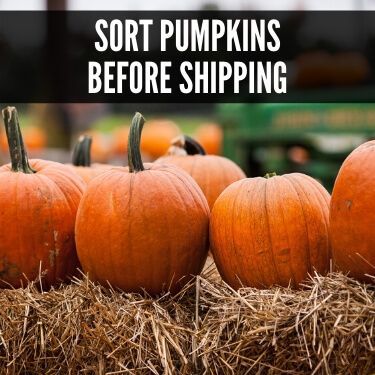
Sorting pumpkins before they are shipped is a vital part of the process because it helps to avoid damage and decay. When a fruit is over-ripe, damaged, or decaying, it releases a gas called ethylene. Ethylene is considered an aging hormone and it can be used to encourage the ripening of fruit. However, when it comes into contact with fruits that are already ripe, it will cause them to become too ripe and eventually decay. If pumpkins are not sorted properly to remove any damaged or decaying fruit, the release of ethylene will damage the rest of the pumpkins. If a large number of pumpkins are stored together, this can lead to some big losses as the fruit will no longer be fit for sale.
It is also important to sort pumpkins into their various varieties, and they need to be categorized in different weight groups to meet market requirements because different sizes will be sold for different purposes. For example, larger pumpkins are more likely to be sold as Jack o lanterns, while smaller fruits will be eaten. Pumpkin crops vary a lot and there will be a mix of different sizes, so they need to be sorted before they can be shipped and sold.
Within the category of American pumpkins, there are 3 main varieties. Two layered pumpkins, usually with red, green, yellow or orange markings weigh around 5kg; Yellow, white, and red pumpkins which can weigh up to 40kg; green, dark green, and pear shaped pumpkins which vary greatly in size. There are also other varieties of pumpkin, like the butternut squash and the marrow.
There are also different grades for pumpkin sizes, and the fruit needs to be separated into these different weight classes. Small pumpkins are anything between 3 to 5 lbs; medium pumpkins weigh between 7 and 12 lbs; large pumpkins weigh 12.5 lbs or more. Export markets accept a range of different fruit sizes, but their ideal range is between 12 and 17 lbs. The general consumer tends to prefer large, uniform pumpkins, so these are more valuable.
Before any pumpkins can be shipped and sold, they need to be separated into different varieties and weight classes, and then packed accordingly.
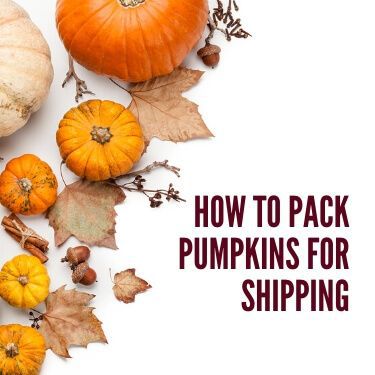
One of the most important factors to consider when asking how are pumpkins transported is how they should be packed for shipping? The pumpkins need to be packed in the correct way so they are safe during transit and they remain fresh until they reach their destination. The way that pumpkins are packed for shipping depends on the market destination and there are a number of different methods that are used.
In some cases, pumpkins will be packed in mesh sacks with 3 to 7 pumpkins in each, depending on the size of the fruit. However, there are a number of issues with this packing method. Firstly, the pumpkins have little to no protection, which means that damage to the rind and bruising is very common. There are also a lot of issues with the mesh sacks bulging if the fruits inside are different sizes.
In most cases, it is best to pack pumpkins in cardboard cartons that have the strength to protect the fruit during transit. Each carton should contain around 40 lbs of pumpkins and no more, and they need to be well ventilated to prevent decay while they are being shipped. When selecting cartons to ship pumpkins in, it is important to find ones that have a bursting strength of at least 275 psi. Internal dividers should also be used to protect the fruit and stop them from shifting around too much, as this can cause bruising and damage to the rind. If fruits are damaged during transit, ethylene will be released and there is a danger of over ripening and decay.
When pumpkins are packed for marine transport to export market destinations, large wooden bulk bins can be used to hold cartons of fruit. These will contain somewhere around 800 lbs of pumpkins in each bin. It is important that an additional 5% weight is included to account for moisture and respiratory weight loss which can occur during transit due to the water holding capacity of pumpkins.
When storing pumpkins or packing them for shipping, it is important that there is good air circulation between the fruits. If pumpkins are stored too close to one another and they are touching, this reduces the air flow and can lead to premature ripening during transport. Pumpkins that are touching are also more likely to get damaged in transit and release ethylene. Bruising of the rind can also occur, and that reduces the sale value of the pumpkins.
These issues can be avoided by using the correct packing materials. Using cartons that have a high bursting pressure is important, and dividers can be used to separate the individual pumpkins in the boxes. It is also a good idea to use padding around each pumpkin to avoid damage to the out layer of the fruit.
Managing humidity is also incredibly important when storing and shipping pumpkins. High levels of humidity can lead to condensation on the outside of the pumpkins and this will increase the risk of disease and decay. However, low humidity will cause dehydration of the fruit. It is important that humidity is maintained at 50-70% and pumpkins are stored in a cool dry place. When shipping pumpkins, it is important to use a temperature controlled vehicle that can maintain the right conditions. Otherwise, pumpkins will succumb to decay before they arrive at their destination and their value will be decreased.
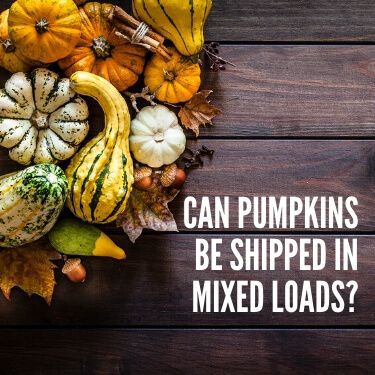
Shipping in mixed loads can be an effective way to save money on transit costs. If you have multiple different types of produce, and you do not necessarily have enough of each to fill an entire truckload, shipping in mixed loads means that you can use fewer vehicles and save on shipping costs. However, this is not always a good idea when shipping pumpkins.
Pumpkins are incredibly sensitive to ethylene gas, and a small amount of ethylene can cause a lot of issues with premature ripening, decay, and discoloration, all of which affect the value of the fruits. This is why it is important to pack pumpkins correctly and avoid any release of ethylene which may affect the entire load. Unfortunately, there are a lot of other types of fruit and vegetables that produce high levels of ethylene. Things like apples, bananas, mangos, and potatoes, for example, give off a lot of ethylene, even if they are undamaged. That means that if you ship a mixed load with pumpkins and some of this ethylene producing produce, the chance of premature ripening and decay is massively increased.
Learn more about shipping apples from New York farms.
The only exception to this is when you are shipping with other forms of squash. All varieties of squash, including pumpkins, produce small levels of ethylene as long as they are not over ripe or damaged. As long as these other types of squash are packed in sturdy cartons and they have dividers and padding to prevent damage, it is ok to create a mixed load with pumpkins.
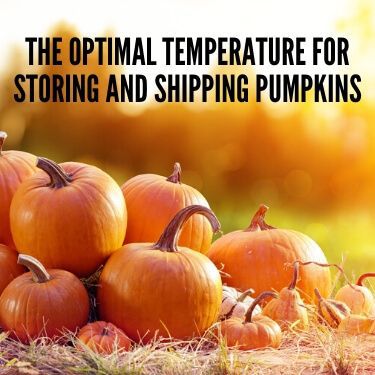
Managing the temperature of pumpkins during storage and shipping is vital because the wrong temperature can cause damage to the fruit. High temperatures will cause increased respiration and higher humidity levels, which leads to condensation. In a hot environment, pumpkins are far more likely to decay, and the resulting ethylene that is released can then cause the entire crop to decay. However, it is equally important to avoid low temperatures. Any temperatures under 50 degrees can cause chilling injury to pumpkins. When pumpkins have chilling injury, they will develop sunken pits on the fruit surface, and the irregular shape makes them less valuable to the consumer. Once they are taken out of storage, pumpkins with chilling injury will decay a lot faster, so their shelf life is reduced once they are put into stores. Chilling injury is a particular risk when pumpkins are stored for longer periods, so it is important that all storage facilities are temperature controlled and the temperature is kept at a consistent level throughout the storage period.
Temperature control is also a big issue when pumpkins are being shipped. In a standard truck, hot or cold weather will cause big fluctuations in the temperature and permanently damage the pumpkins. That is why it is vital that all pumpkins are shipped in a temperature controlled vehicle that can maintain the correct temperature until the fruit reaches its destination.
The damage that is caused by poor temperature control cannot be reversed, so unless these temperature guidelines are adhered to from the initial storage period all the way through the shipping process, the pumpkins will lose value and may not have any resale value at all in some cases.
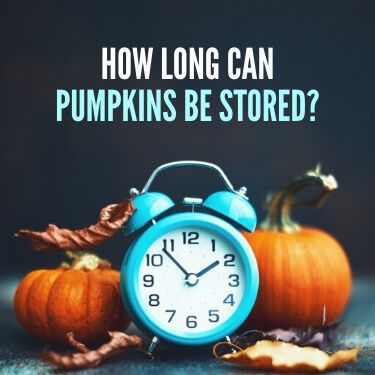
In some cases, it may be necessary to store pumpkins for longer periods. However, pumpkins can only be stored safely for a certain amount of time, after which they will start to degrade and rot. If pumpkins are left in storage for too long, they will decay and lose their sale value, so it is important to know how long pumpkins can be stored for.
This all depends on how pumpkins have been treated before they are put into storage. For example, have they been pre cooled and cured properly? If they have not, they will not last anywhere near as long as pumpkins that have been properly processed. The storage conditions make a big difference as well. If the temperature and humidity in the storage area are not controlled effectively, the shelf life of the pumpkins is drastically reduced. However, if they have been pre cooled and cured, and all of the storage conditions are met, pumpkins can be stored for anywhere between 30 and 90 days.
In order to prolong the lifespan of pumpkins, it is important to clean them properly before they are put into storage. Using a very mild chlorine solution to wash the pumpkins will destroy any bacteria that could cause the pumpkins to rot while they are in storage. It is important that you dry them fully after washing them because excess moisture can also lead to rotting. Try to make sure that the pumpkins are stored in a dark place that has the right temperature and humidity controls, and avoid storing them directly on a concrete floor if possible because this can lead to an increased risk of decay. As long as these guidelines are followed, pumpkins can be stored for 30 to 90 days before being shipped in a temperature and humidity controlled vehicle, and they will remain in good condition.
Shipping pumpkins is a lot more challenging than people may realize and there are a lot of different factors to consider. There are a few obstacles to consider when you think of how are pumpkins transported. In fact, if you have ever wondered how are pumpkins transported, the answer is, with great care and difficulty.
Before they can be shipped, they need to be pre cooled immediately after harvesting. This will ensure that they do not over ripen and begin to rot before they can be shipped. Once they have been pre cooled, they will then need to be cured to harden the outer rind and give the flesh inside more protection. If pumpkins are not processed in the right way before being put into storage, they are more likely to rot or discolor. These processes require a lot of specialist equipment to ensure that the pumpkins last long enough to be stored and shipped in good condition.
After this initial processing, the pumpkins are ready to be stored. It is important that specific conditions are met in the storage facility. Pumpkins need to be stored with enough room that they are not touching and there is a good amount of air flow between them. If they are stored too close together, there is a higher chance of bruising and damage to the flesh, and premature ripening. The temperature and the humidity in the storage facility needs to be carefully managed as well. High temperatures and excess humidity cause condensation and lead to a higher likelihood of rotting and they can also cause dehydration. Cold temperatures will cause chilling injuries, and once taken out of storage, these pumpkins will be more likely to rot.
When it comes to shipping pumpkins, it is important to reduce damage because damaged fruit will release ethylene, which causes over ripening and rotting. If a single pumpkin gets damaged, this can ruin an entire load. That is why it is important to pack pumpkins carefully, using dividers and padding to stop them from touching one another and moving around too much during transit. This can be difficult to manage, especially when shipping overseas.
The temperature and humidity will need to be managed during the shipping process as well. This means that a temperature controlled vehicle is always necessary. Pumpkins that are shipped in standard vehicles are not safe for human consumption.
Throughout the shipping process, it is important that you are compliant with the rules on sanitary transport of human and animal food as outlined by the Food Modernization Safety Act. All vehicles that are used to transport food must have adequate temperature controls and must be adequately cleanable.
All loads must be protected against cross contamination between food items and non-food items, and measures must be taken to prevent contamination from food allergens. However, this is not usually a concern when shipping pumpkins because they will only be shipped in mixed loads with other squash.
Finally, all drivers must have the necessary training in food handling ad sanitation practices. All carriers are required to provide this training and keep documentation to prove that their employees have been given the right training. Records of written procedures pertaining to the handling and shipping of food products also need to be retained for a period up to 12 months.
If you are transporting pumpkins, it is important that you work with a shipping company that is compliant with the Food Modernization Safety Act.
At USA Truckload Shipping, powered R+L Global Logistics, we understand the specific challenges that you face when shipping produce like pumpkins. The guidelines set out by the FDA are very strict and if you are found to be in breach of them, that can be a big issue for your business. That is why temperature controlled vehicles are so important when shipping pumpkins and other produce. When you work with us, you can be confident that we will follow all of the right procedures and manage the temperature of your cargo so your produce is protected and completely fresh on arrival.
How are pumpkins transported with a strategic freight partner? We will monitor and maintain the correct temperature and humidity throughout the shipping process to prevent premature ripening and rotting of your pumpkins. We will also put measures in place to protect the pumpkins and stop them from getting damaged in transit. The entire fruit set will be packed professionally so there is adequate air flow between the pumpkins as well. All of our vehicles use the latest in cooling technology so you can be sure that we are compliant with temperature control guidelines at all times. Once your cargo reaches its destination, a final temperature check will be carried out before it is loaded onto the waiting equipment.
If you are new to the produce industry and you are wondering how are pumpkins transported, you do not need to worry. We have years of experience working with a wide range of different types of produce, and we have a full understanding of all of the conditions that must be met to safely transport pumpkins.
We can help you to transport full truckloads of pumpkins across the country, whilst always maintaining the highest of food safety standards so your product retains its value when it arrives at its destination.
R+L Global Logistics has a vast network of carrier partners and a wide range of company based assets, so we are equipped to deal with the specific challenges that your company faces when shipping pumpkins. We work on an individual basis with all of our clients so we can understand your needs and create shipping solutions with freight services that work for you.
You can use the simple quote calculator on our website to get a general idea of our rates for different shipping routes and types of cargo. If you need more information, feel free to get in touch with us and discuss your needs over the phone by calling us at (866) 353-7178. We will then create a custom freight quote based on your specific shipping requirements. If you have any questions about how pumpkins are transported or shipping fresh fish, we will be happy to answer them for you.
If you are in need of full truckload shipping services for pumpkins or other produce that needs to be temperature controlled, get in touch with us today and we can discuss your needs, including expedited freight, refrigerated shipping and truckload shipping. You can even request a freight shipping quote online.
Pumpkins are grown across the United States and you will find them in almost every state. The crop conditions vary a lot depending on the local climate and soil condition. However, the majority of the pumpkins in the country are produced in a handful of states.
If the temperature and humidity in the storage area are not controlled effectively, the shelf life of the pumpkins is drastically reduced. However, if they have been pre cooled and cured, and all of the storage conditions are met, pumpkins can be stored for anywhere between 30 and 90 days.
In most cases, it is best to pack pumpkins in cardboard cartons that have the strength to protect the fruit during transit. Each carton should contain around 40 lbs of pumpkins and no more, and they need to be well ventilated to prevent decay while they are being shipped. When selecting cartons to ship pumpkins in, it is important to find ones that have a bursting strength of at least 275 psi.
The pumpkin growing season has been volatile in 2021, however, a pumpkin shortage likely isn't looming. Despite heavy rains and blight, pumpkin prices will remain consistent for the 2021 season.
R+L Global Logistics
315 NE 14th St., Ocala, FL 34470